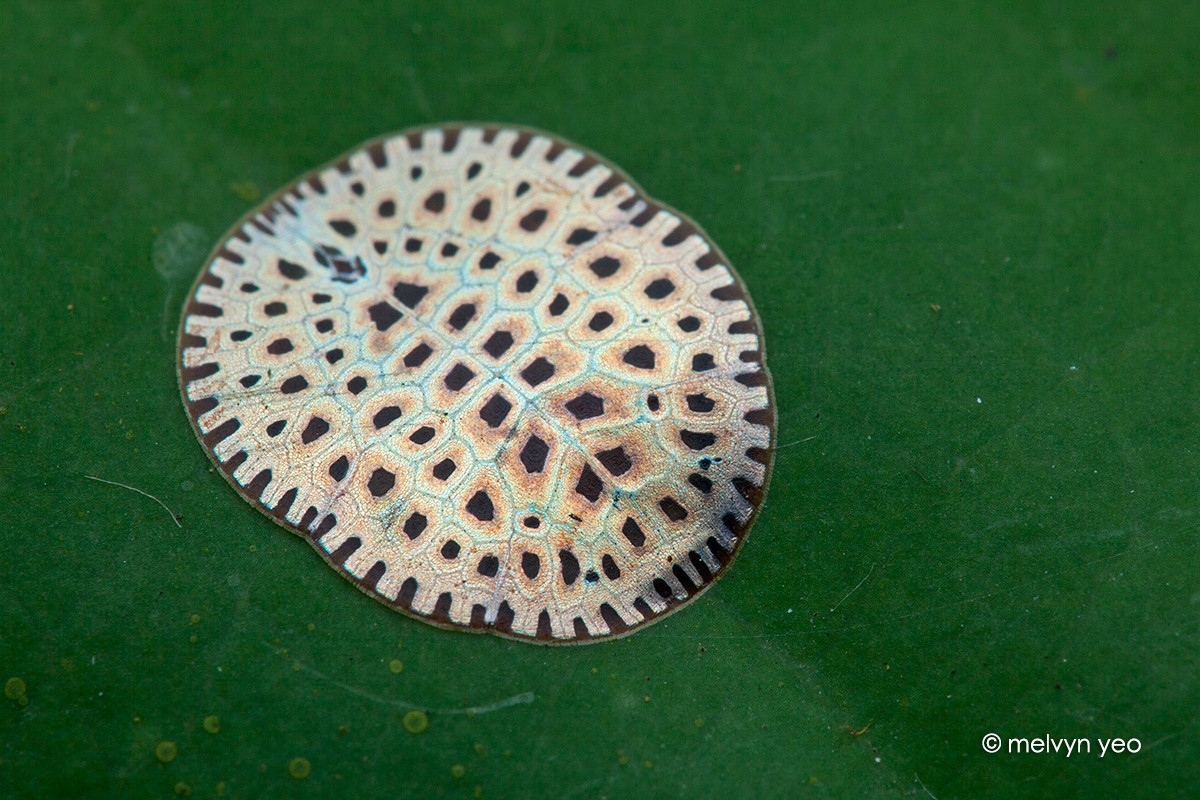HOME | DD
 melvynyeo — Paralecanium expansum metallicum scale insect
melvynyeo — Paralecanium expansum metallicum scale insect

#insect #scale #metallicum #expansum #paralecanium
Published: 2015-10-23 07:25:59 +0000 UTC; Views: 4389; Favourites: 170; Downloads: 64
Redirect to original
Description
See backlight animation here c2.staticflickr.com/6/5755/219…Taken at night in Singapore forest.
Quote from en.wikipedia.org/wiki/Scale_in…
The scale insects are small insects of the order Hemiptera, suborder Sternorrhyncha. They comprise the superfamily Coccoidea, previously placed in the now obsolete group called "Homoptera". There are about 8,000 described species of scale insects.
Scale insects vary dramatically in appearance; some are very small organisms (1–2 mm) that grow beneath wax covers (some shaped like oyster shells, others like mussel shells), to shiny pearl-like objects (about 5 mm), to creatures covered with mealy wax. Adult female scales are almost always immobile (aside from mealybugs) and permanently attached to the plant they have parasitized. They secrete a waxy coating for defense; this coating causes them to resemble reptilian scales or fish scales, hence their common name.
The group shows high degrees of sexual dimorphism; female scale insects, unusually for Hemiptera, retain the immature external morphology even when sexually mature, a condition known as neoteny. Adult males usually have wings (depending on their species) but never feed, and die within a day or two.
Species in which males do have wings generally possess only one pair of fully functional wings, and in particular, the fore-wings. This is unusual among insects; it most closely resembles the situation in the true flies, the Diptera. However, the Diptera and Hemiptera are not at all closely related and do not closely resemble each other in morphology; for example, the tail filaments of the Coccoidea do not resemble anything in the morphology of flies. The hind (metathoracic) wings of scale insects are reduced, commonly to the point that they generally are overlooked. In some species the hind wings have hamuli, hooklets, that couple the hind wings to the main wings, a condition usually associated with the Hymenoptera. The vestigial wings often are reduced to the point where they are referred to as halteres or pseudohalteres, but again, their resemblance to the halteres of flies is analogous, not homologous.[2] It is not at present clear to what extent the pseudohalteres have any substantial control function to match the true halteres of the flies.
The first instars of most species of scale insects emerge from the egg with functional legs and are informally called "crawlers". They immediately crawl around in search of a favourable spot to settle down and feed. In some species they delay settling down either until they are starving, or until they have been blown away by wind onto what presumably is another plant, where they may establish a colony separate from the parent. There are many variations on such themes, such as scale insects that are associated with species of ants that act as herders and carry the young ones to favourable protected sites to feed. In either case, many such species of crawlers, when they change their skins, lose the use of their legs if they are female, and stay put for life. Only the males retain their legs and use them in seeking females for mating.[3]
The specifics of their reproductive systems vary considerably within the group, including three forms hermaphroditism[4] and at least seven forms of parthenogenesis.
Related content
Comments: 16

Fascinating! Reminds me of a turtle, or a brain. You've got skills! Incredible photographic documentation.
👍: 0 ⏩: 0

amazing, beautiful and informative. I love your work!
👍: 0 ⏩: 0

Incredible information! Thank you for sharing.
👍: 0 ⏩: 0

Poor bug, he looks like he got run over by a truck.
👍: 0 ⏩: 0

How could this be a hemiptera? I woudn't have guess it.
Do you have some good references to share about this species please? I'm curious and don't relly see anything precise on the internet.
👍: 0 ⏩: 1

👍: 0 ⏩: 1

Such strange animals. I'm amazed you noticed it!
👍: 0 ⏩: 0

Earlier stage yes.... later stage for female, no 
👍: 0 ⏩: 1
































